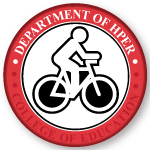Author ORCID Identifier
Document Type
Article
Publication Date
10-8-2019
Publication Title
Journal of Applied Physiology
Volume
127
Issue
4
First Page
940
Last Page
949
Abstract
Peripheral artery disease (PAD) is an atherosclerotic disease that is associated with attenuated vascular function, cardiorespiratory capacity, physical function, and muscular strength. It is essential to combat these negative effects on health by incorporating lifestyle interventions to slow disease progression, such as exercise. We sought to examine the effects of aquatic walking exercise on cardiovascular function, cardiorespiratory capacity [maximal volume of oxygen consumption (V̇o2max)], exercise tolerance [6-min walking distance (6MWD)], physical function, muscular strength, and body composition in patients with PAD. Patients with PAD (n = 72) were recruited and randomly assigned to a 12-wk aquatic walking training group (AQ, n = 35) or a control group (CON, n = 37). The AQ group performed walking and leg exercises in waist-to-chest-deep water. Leg arterial stiffness [femoral-to-ankle pulse wave velocity (legPWV)], heart rate (HR), blood pressure (BP), ankle-to-brachial index (ABI), V̇o2max, 6MWD, physical function, muscular strength, body composition, resting metabolic rate (RMR), and flexibility were measured before and after 12 wk. There were significant group × time interactions (P < 0.05) after 12 wk for legPWV and HR, which significantly decreased (P < 0.05) in AQ, and V̇o2max, 6MWD, physical function, and muscular strength, which significantly increased (P < 0.05) in AQ, compared with no changes in CON. There were no significant differences (P > 0.05) for BP, ABI, RMR, or flexibility after 12 wk. Interestingly, there was relatively high adherence (84%) to the aquatic walking exercise program in this population. These results suggest that aquatic walking exercise is an effective therapy to reduce arterial stiffness and resting HR and improve cardiorespiratory capacity, exercise tolerance, physical function, and muscular strength in patients with PAD.
Recommended Citation
Impacts of aquatic walking on arterial stiffness, exercise tolerance, and physical function in patients with peripheral artery disease: a randomized clinical trial Song-Young Park, Yi-Sub Kwak, and Elizabeth J. Pekas Journal of Applied Physiology 2019 127:4, 940-949

